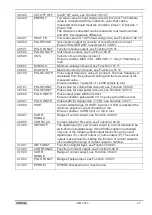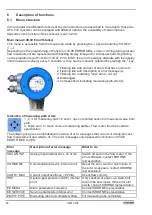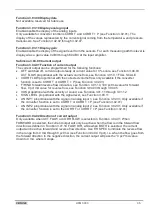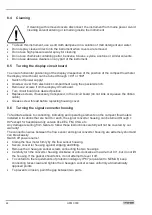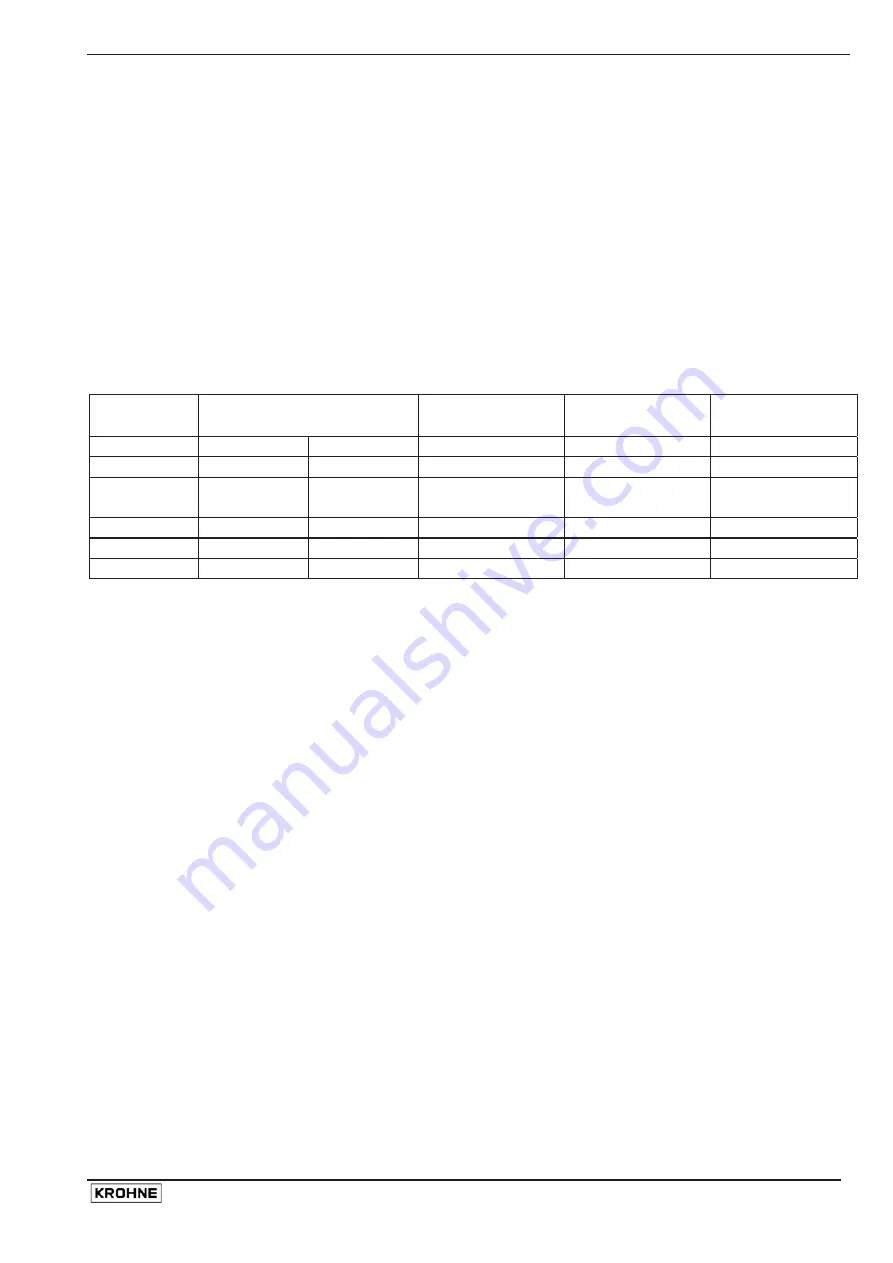
UFM
3030
33
The calculation of the Volume Correction Factor is based on the standards of the American
Petroleum Institute (API), and consists of two individual correction factors: chapter 11.1 standard
2540 for calculating the temperature correction (Ctl) and chapter 11.2.1 M for calculating the
pressure correction (Cpl).
The correction for the influence of temperature on liquid (Ctl) is calculated from:
Ctl = EXP [-
α
t (Tactual - 15) * (1 + 0.8
α
t (Tactual – 15))]
Tactual = actual liquid temperature [°C]
α
t = thermal expansion coefficient
The thermal expansion coefficient
α
t is calculated from the standard density at 15°C and three
constants of the measured product (K0, K1 and K2).
α
t = K0/
ρ
152 + K1/
ρ
15 +K2
Product
Density range (kg/m3)
ρ
15 at 15 °C
K0 K1 K2
Crude 610.5 1075.0 613.9723 0
0
Gasoline 653.0
770.0
346.4228
0.4388
0
Transition
area
770.5 787.5 2680.3206 0
-0.00336312
Jet group
788.0
838.5
594.5418
0
0
Fuel oil
839.0
1075.0
186.9696
0.4862
0
Free fill
500.0
2000.0
0
0
0
As a rule of thumb the volume correction factor can be estimated as 0.1% per degree Celsius.
(0,055% per degree Fahrenheit)
Correction for the influence of pressure on liquid (Cpl)
When the feature has been selected for the compensation of the measured volume for the influence
of temperature and pressure, no extra parameters have to be programmed for the pressure
correction. The calculation of this pressure correction is only depending on the given standard
density at 15°C. Based on the density the compressibility factor is calculated from the following
mathematical model:
F = EXP [-1.62080 + 0.00021592 * t 0.87096/
ρ
15 *10-6 + 0.0042092 * tactual/
ρ
15 * 10-6]
Tactual = actual liquid temperature [°C]
ρ
15 = density at standard condition i.e. at 15 °C [kg/m3]
By using this calculated compressibility factor the Correction for pressure is calculated from:
1 Cpl = 1/ 1-F * Pactual*10-4
F = compressibility factor
Pactual = absolute actual pressure [bar]
As a rule of thumb the volume correction factor can be estimated as 0.01% per bar (0,00068% per
PSI)
With the fluid density entered and the corrected volume calculated, the corrected volume flow can
be displayed as mass flow. This can be done as follows:
3.1.1. Set the unit to free user definable unit (**********)
3.7.5. Set the required unit text e.g. kg/hr.
3.7.6. Set the amount of mass per m3 in the unit as displayed e.g. kg.
3.7.7. Set the time unit relative to seconds e.g. for hour enter 3600









